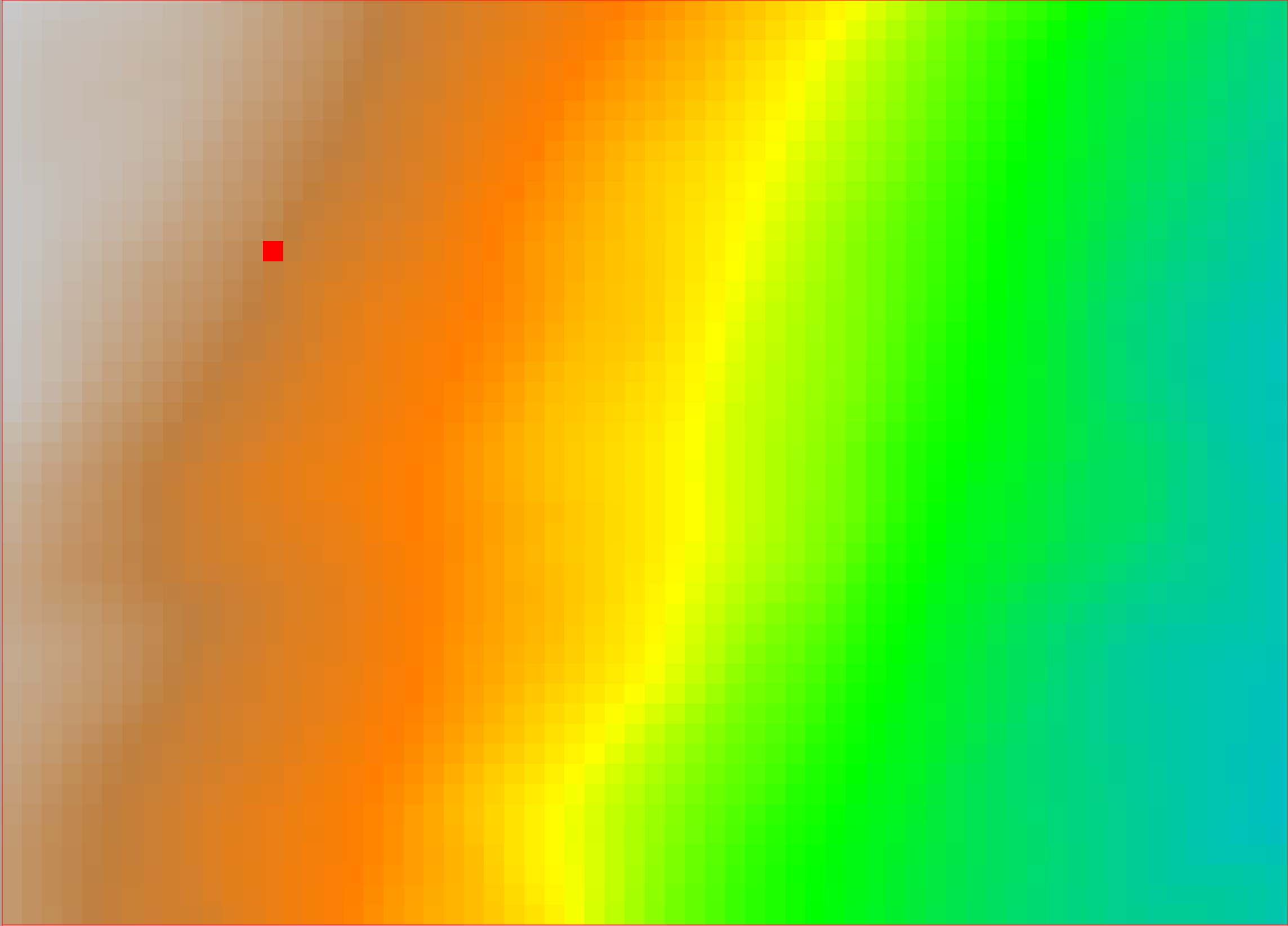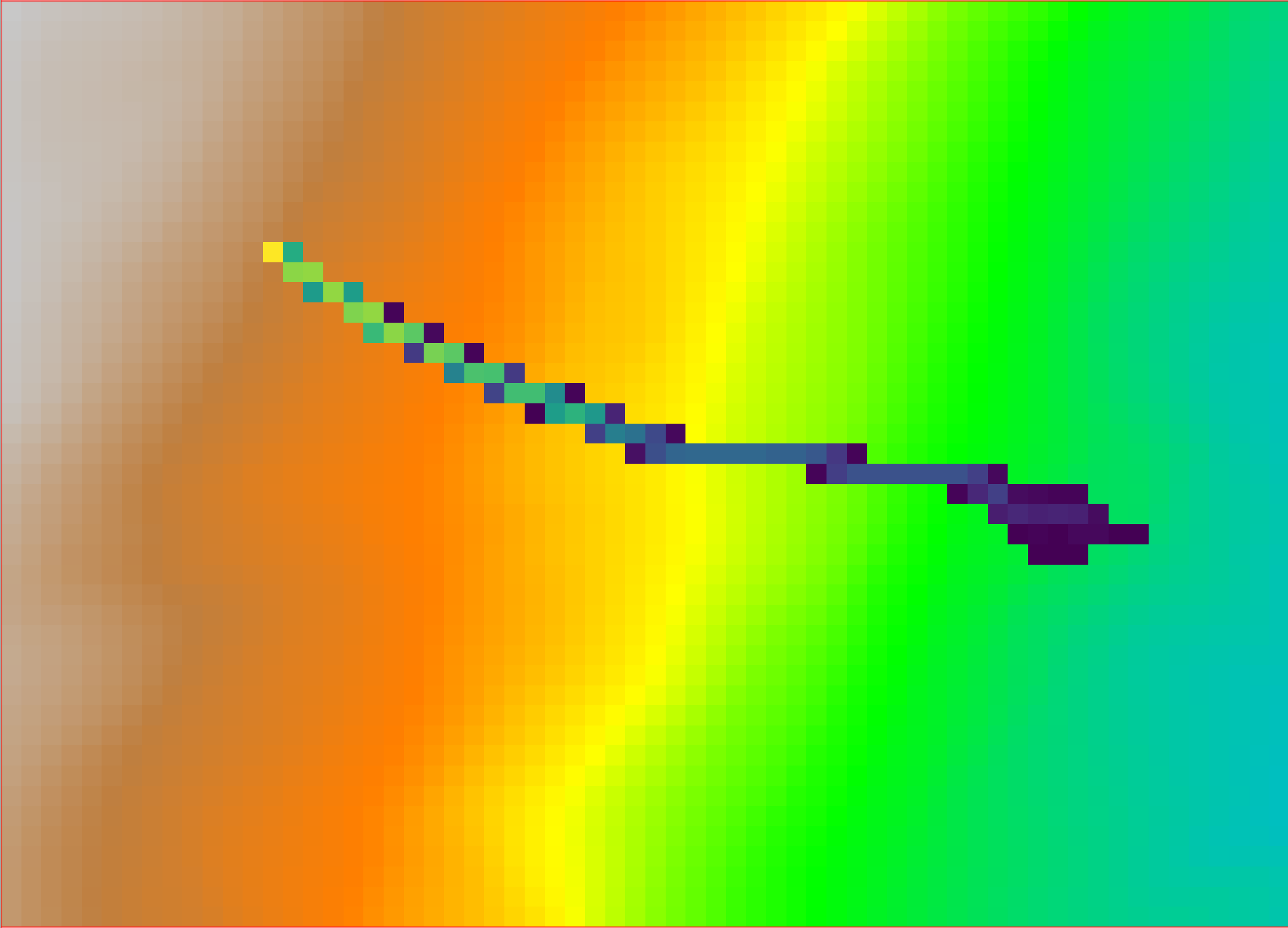Note: This document is for an older version of GRASS GIS that has been discontinued. You should upgrade, and read the current manual page.

NAME
r.stone - The STONE rockfall moduleKEYWORDS
raster, stone, rockfallSYNOPSIS
Flags:
- --overwrite
- Allow output files to overwrite existing files
- --help
- Print usage summary
- --verbose
- Verbose module output
- --quiet
- Quiet module output
- --ui
- Force launching GUI dialog
Parameters:
- dem=name [required]
- Elevation raster map
- The input elevation raster map
- sources=name [required]
- Start/stop raster map
- The input start/stop integer raster file.Shows the source areas of rock fall (value > 0).Shows the areas where rock falls must stop, e.g. a lake (value = -1).
- nrest=name [required]
- Normal Elasticity raster map
- Contains values of normal (vertical) restitution coefficient, used at impact points.Accepted values are from 0 (total energy dumping) to 100 (elastic restitution)Values are in integer percentage.
- trest=name [required]
- Tangential Elasticity raster map
- Contains values of tangential (horizontal) restitution coefficient, used at impact points.Accepted values are from 0 (total energy dumping) to 100 (elastic restitution)Values are in integer percentage.
- friction=name [required]
- Friction raster map
- Contains values of rolling friction angle (tan(beta)), used where rolling.Example Friction for alluvial deposit is high, beta = 40.4, tan(beta) = 0.85.Example Friction for bedrock is low, beta = 16.7, tan(beta) = 0.30
- stoch_funct=integer
- The stocastic simulation function to use for VElas, HElas, Frict (0 = Gaussian, 1 = Cauchy, 2 = Uniform)
- Default: 0
- stoch_funct_ang=integer
- The stocastic simulation function to use for the range of starting angles (0 = Gaussian, 1 = Cauchy, 2 = Uniform)
- Default: 0
- ang_stoch_range=integer [required]
- Percent variability of detachment angle
- Default: 10
- vrest_stoch_range=integer [required]
- Percent variability of normal restitution
- Default: 10
- hrest_stoch_range=integer [required]
- Percent variability of tangential restitution
- Default: 10
- frict_stoch_range=integer [required]
- Percent variability of the friction coefficient
- Default: 10
- start_vel=float [required]
- Start velocity
- The start velocity of a rock [m/s].
- Default: 1.0
- stop_vel=float [required]
- Stop velocity
- Parameter used to define the minimum velocity for a rock fall.A velocity lower than the one specified here causes the boulder to stop. [m/s]
- Default: 3.0
- counter=name [required]
- The resulting counters raster output map
- maxvel=name
- The optional maxvel raster output map
- maxdz=name
- The optional maxdz raster output map
Table of contents
DESCRIPTION
The module r.stone is a GRASS implementation of the model STONE [1] for three-dimensional modeling of rockfall trajectories. A rockfall is a point-like block, by assumption, and the model simulates its trajectory as a sequence of falling, bouncing and rolling steps. The trajectory follows a digital elevation model, it starts from a user-defined source point(s) with a non-null initial velocity and stops downhill when all of its kinetic energy is loss (i.e., when it reaches a minimum velocity) by bouncing and/or rolling on the ground. The Coefficients of normal and tangential restitution describe the amount of kinetic energy lost in each bounce, and a friction coefficient describes the kinetic energy loss during rolling. The r.stone implementation of STONE requires a minimal set of input raster maps in addition to the DTM, including a map of sources, and three maps of numerical coefficients. The output is a raster map with values corresponding to the number of trajectories crossing each grid cell after a full simulation.
Input DTM is a square fixed spaced DTM, used as a triangular regular network built on the fly at run-time. Rockfall trajectories are evaluated using parametric second-order equations after a roto-transformation of the coordinate system to the run-time triangle. The calculation of each trajectory includes the random selection of an initial direction angle, and of cell-by-cell values of restitution and friction coefficients extracted from Gaussian distributions centered on the values specified in the corresponding input raster and limited by +/- 10% from the central value. By virtue of the random selection of initial angle and parameters, and of the possibility of simulating many trajectories from each source cell, the output assumes a probabilistic meaning.
SEE ALSO
EXAMPLE
The input parameters of r.stone listed below are all mandatory. Generating a map of source locations requires either knowledge of the area, gained through field campaigns or aerial photos, or a sound statistical method. A simplistic method to estimate the location of sources is to consider locations on steep terrain as possible rockfall sources, for example:
bash
g.region rast=dem
r.slope.aspect –e elevation=dem slope=slope
r.mapcalc “sources = if(slope>50,10,null())”
to simulate 10 trajectories originating from each cell with slope larger than 50 degrees.
Raster maps of friction and restitution coefficients can be generated based on geo-lithological knowledge of the area. Assuming a geological map, in polygonal vector format, with classes similar to the table below, we generate the input raster maps as follows:
bash
v.db.addcolumn map=geology columns='friction real, nrest integer, vrest integer'
db.execute sql=”update geology set friction=0.65 where class_id=1”
db.execute sql=”update geology set friction=0.80 where class_id=2”
...
v.to.rast input=geology use=attr attribute_column=friction output=friction
And similar operations for nrest and vrest, for all classes present in the geology map. The actual model run is as follows:
bash
r.stone dem=dem sources=sources_raster nrest=nrest_raster
trest=trest_raster friction=friction_raster stop_vel=1
counter=out_counter_raster
Where:
- dem is the input digital elevation model.
-
sources is the input sources raster.
- Defines the start and stop points of the rockfalls trajectories. Positive integer values indicate source areas, while a value of -1 indicates areas where rocks must stop, such as for example a lake. Values larger than 1 trigger the simulation of a corresponding number of randomized trajectories, from the same starting point. Null cells have no effect.
-
nrest is the normal restitution raster map.
- Contains values of normal (vertical) restitution coefficient, useful at impact points. Accepted values are from 0 (total energy dumping) to 100 (elastic restitution). Values are expressed in integer percentage.
-
trest is the tangential restitution raster map.
- Contains values of tangential (horizontal) restitution coefficient, used at impact points. Accepted values are from 0 (total energy dumping) to 100 (elastic restitution). Values are expressed in integer percentage.
-
friction is the Friction raster map.
-
Contains values of the rolling friction angle (tan(beta)).
- Example Frictions:
- For alluvial deposits, where the friction is high: beta = 40.4, tan(beta) = 0.85
- For bedrock, where the friction is low: beta = 16.7, tan(beta) = 0.30
-
Contains values of the rolling friction angle (tan(beta)).
- stop_vel is the parameter used to define the minimum velocity for a rock to be considered in motion. A velocity lower than the one specified here causes the boulder to stop.
- counter is the output raster of the number of stones that passed through a cell.
The following table, extracted from [1], gives example values of restitution and friction coefficients corresponding to 19 lithological classes used in Italy.
| Lithological class | Friction | Normal restitution | Tangential restitution |
|---|---|---|---|
| Anthropic deposits | 0.65 | 35 | 55 |
| Alluvial, lacustrine, marine, eluvial and colluvial deposits | 0.80 | 15 | 40 |
| Coastal deposits, not related to fluvial processes | 0.65 | 35 | 55 |
| Landslides | 0.65 | 35 | 55 |
| Glacial deposits | 0.65 | 35 | 55 |
| Loosely packed clastic deposits | 0.35 | 45 | 55 |
| Consolidated clastic deposits | 0.40 | 55 | 65 |
| Marl | 0.40 | 55 | 65 |
| Carbonates-siliciclastic and marl sequence | 0.35 | 60 | 70 |
| Chaotic rocks, mélange | 0.35 | 45 | 55 |
| Flysch | 0.40 | 55 | 65 |
| Carbonate Rocks | 0.30 | 65 | 75 |
| Evaporites | 0.35 | 45 | 55 |
| Pyroclastic rocks and ignimbrites | 0.40 | 55 | 65 |
| Lava and basalts | 0.30 | 65 | 75 |
| Intrusive igneous rocks | 0.30 | 65 | 75 |
| Schists | 0.35 | 60 | 70 |
| Non–schists | 0.30 | 65 | 75 |
| Lakes, glaciers | 0.95 | 10 | 10 |
Sample output
The following figures show the output of the r.stone module, initialized with an individual source point.
A sample portion of a 10m x 10m resolution DEM, with one grid cell (red square) acting as a rockfall source point, with raster value 100: the effect on the model r.stone is to simulate 100 trajectories starting from that cell.

Sample output of r.stone, depicting the counter raster map; the values of the raster output correspond to the total number of simulated trajectories going through that cell.

REFERENCES
[1] The algorithm is based on the work of Fausto Guzzetti, Giovanni Crosta, Riccardo Detti, Federico Agliardi (2002): STONE: a computer program for the three-dimensional simulation of rock-falls. Computers & Geosciences, 28(9), 1079-1093. https://doi.org/10.1016/S0098-3004(02)00025-0
[2] Example coefficients for r.stone are in: M. Alvioli et al. (2021): Rockfall susceptibility and network-ranked susceptibility along the Italian railway. Engineering Geology, 293, 106301. https://doi.org/10.1016/j.enggeo.2021.106301
AUTHORS
Fausto Guzzetti and Massimiliano Alvioli
Translation from the original code and adaptation to GRASS GIS by Andrea Antonello
SOURCE CODE
Available at: r.stone source code (history)
Latest change: Tuesday Apr 15 23:08:17 2025 in commit: c2e43d6a48ccdad264a2d10141f793b257c30e85
Main index | Raster index | Topics index | Keywords index | Graphical index | Full index
© 2003-2024 GRASS Development Team, GRASS GIS 8.3.3dev Reference Manual